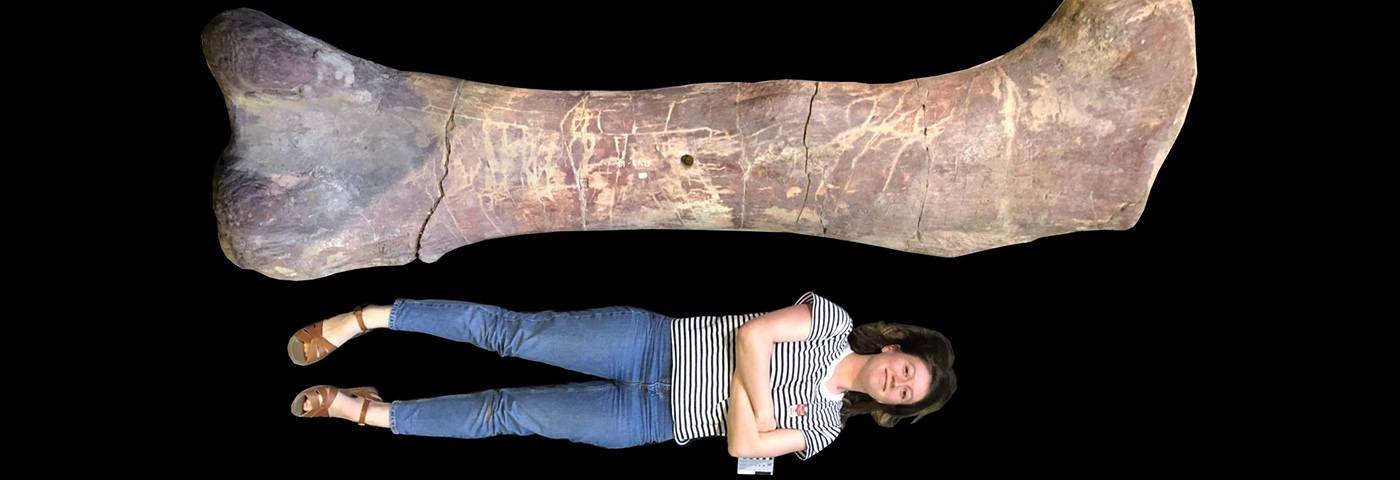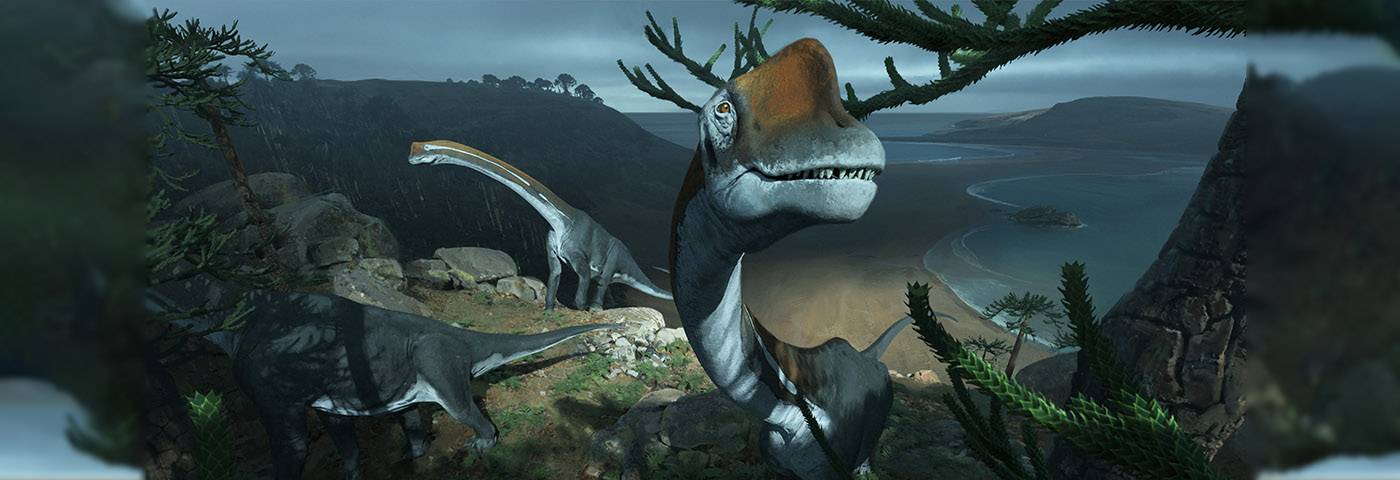Vertebrate Palaeontology
We reconstruct patterns of ancient biodiversity through time and space in an attempt to better understand how past continental configurations and climatic changes constrained the evolution and distribution of ancient biodiversity, with relevance to predicting the long-term responses of climatically-threatened living organisms. This incorporates cutting-edge quantitative methods to elucidate the biogeographic history of fossil groups. Our work includes the characterisation of statistical relationships between deep time biodiversity and the geological biases that can obscure our understanding of macroevolutionary patterns, as well as subsampling and modelling approaches to ameliorate these biases.

Femur of the sauropod dinosaur Patagotitan, the largest animal to ever walk on land

Giant crocodile relative, Sarcosuchus imperator (Image - Bob Nicholls)

Lingwulong shenqi (Zhang Zongda)

Vouivria dampariensis, oldest known titanosauriform sauropod dinosaur (Chase Stone)
A key element of this research theme is to provide a deep time perspective on the evolution of the latitudinal biodiversity gradient, the first-order macroecological pattern that today is characterised by a decrease in the number of species from the equator to the poles. Explaining the drivers of this gradient is regarded as one of the great contemporary challenges of macroecology. The fossil record provides key empirical evidence of the long-term interactions between biodiversity and climate, the most likely driver of the gradient.
Our research also comprises anatomical approaches via the description of fossils, and reconstruction of the evolutionary relationships of extinct species through the assembly and analysis of comprehensive, quantitative morphological datasets. We utilise sophisticated phylogenetic methods to analyse and date our evolutionary trees. Our research seeks to understand the origins, diversification patterns, evolutionary relationships, palaeobiology, and biogeographic history of a variety of taxonomic groups, with particular focus in two species-rich groups:
(1) Sauropodomorph dinosaurs first appeared approximately 230 million years and survived until the mass extinction 66 million years ago. This globally distributed group of terrestrial herbivores include the largest animals ever to walk on land, raising questions regarding the ecological limits of gigantism.
(2) Crocodylomorphs consist of crocodiles and their extinct relatives. Unlike today, the group’s fossil record reveals a far richer ancient biodiversity, spanning regions and environments uninhabited today, including marine species and herbivorous forms. This raises questions about why and how groups of organisms dwindle in diversity.
The Vertebrate Palaeontology group is a diverse and dynamic set of researchers, with strong ties to the Natural History Museum, London, in particular, and with international collaborations all around the world.
Group members
Academic staff:
Prof Paul Upchurch
Prof Philip Mannion
Dr Chris Dean
Dr James Hansford
Dr Devin Hoffman
Dr Alfio Alessandro Chiarenza
PhD Students:
Ewan Bodenham
Samantha Beeston
Paul Burke
Joel Heath
Sarah Jamison-Todd
Cassius Morrison
Cecily Nicholl
Bethany Pittard
Perth Sethapanichsakul
General Enquiries:
Prof Philip Mannion
p.mannion@ucl.ac.uk
+44 (0)20 3108 8208
 Close
Close

